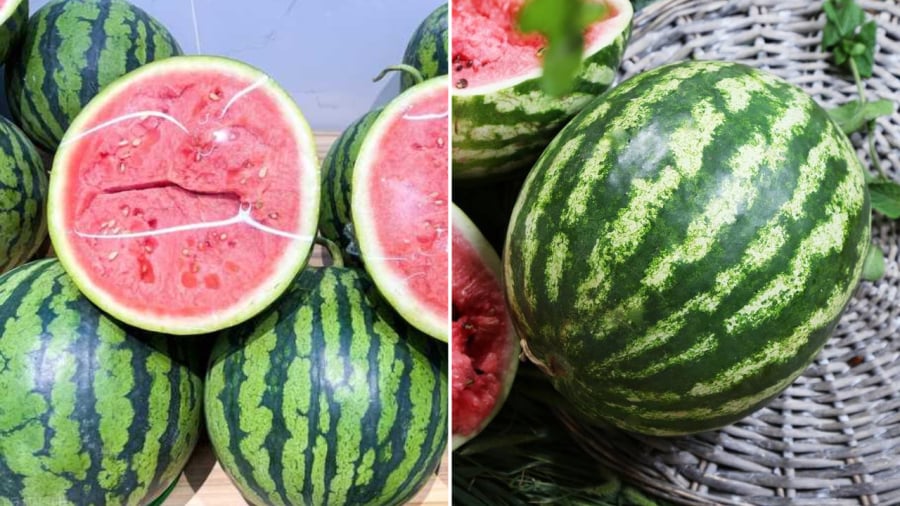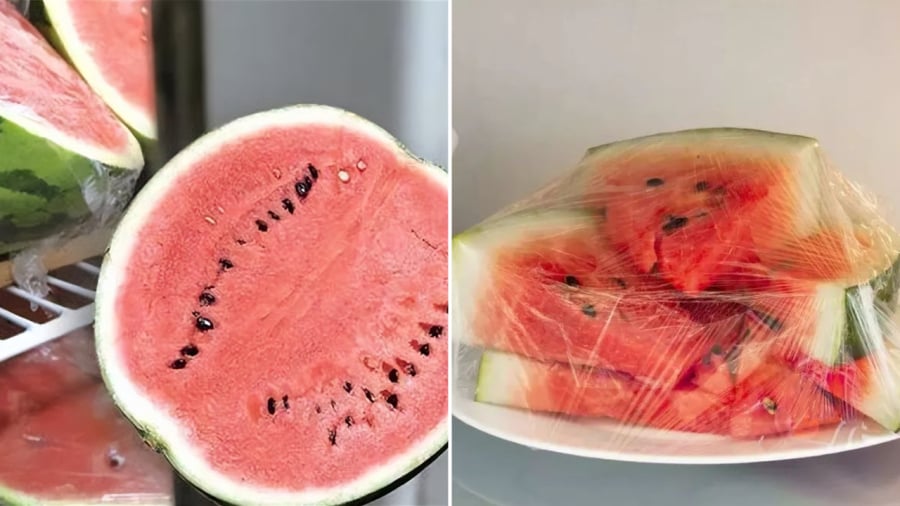Watermelon is a sweet and juicy fruit that is perfect for beating the summer heat. A single watermelon is usually quite large and can’t be finished in one sitting, especially for smaller households. If not stored properly, cut watermelon pieces can spoil quickly, altering in taste and becoming unsafe to consume. To prolong the lifespan of your watermelon, consider the following tips.
Selecting a Ripe Watermelon
- Examine the shape and rind.
Choose watermelons that are symmetrically shaped and avoid any with dents or irregularities. The rind should be taut and feature distinct, uninterrupted stripes; avoid those with cracks. A deep yellow underside, where the melon touched the ground, indicates a sweet and ripe fruit.
- Observe the stem.
A curved, withered stem is a sign of a ripe watermelon with a sweet flavor. Conversely, a thick, green stem usually indicates an unripe melon with white, insipid flesh.
- Tap the rind.
A ripe, juicy watermelon will emit a deep, hollow sound when tapped. If the sound is dull and flat, the melon may not be ripe yet.

Watermelon Preservation Tips
- Storing whole watermelons.
Keep whole watermelons in a cool, dry, and well-ventilated area, away from direct sunlight. In moderate temperatures, watermelons can stay fresh for about a week. To maintain moisture and prevent direct contact with the ground, you can place a layer of dry straw or newspaper underneath the melon.
Alternatively, you can store the watermelon in the refrigerator’s crisper drawer. At temperatures between 8-10°C (46-50°F), a whole watermelon can stay fresh for several weeks. However, avoid placing it near strong-smelling foods like meat, fish, eggs, onions, or garlic. It’s best to consume the watermelon as soon as possible after purchase to ensure optimal freshness.
- Storing cut watermelon pieces.

For cut watermelon pieces (with the rind still intact), wrap them tightly in plastic wrap to maintain moisture and prevent bacterial growth. Store these in the refrigerator’s crisper drawer, away from raw meats and pungent foods. With this method, the watermelon can stay fresh for up to a week, although it’s best consumed within 1-2 days.
You can also cut the watermelon into bite-sized pieces, peel off the rind, and place them in an airtight container. This method helps maintain freshness for 3-4 days by preventing bacterial growth and protecting the watermelon from absorbing other food odors. Ensure the container is thoroughly cleaned before use.
If you wish to store the watermelon for an extended period, you can freeze it. However, frozen watermelon is best suited for making juices, smoothies, or ice cream, as it tends to become mushy and watery upon thawing.
When cutting watermelon, use a clean, dry knife and cutting board dedicated to fruit preparation. It’s important to keep the cutting tools clean to prolong the watermelon’s freshness. Additionally, consume cut watermelon promptly, as it is more susceptible to bacterial growth. Discard any watermelon that shows signs of spoilage, such as a soft, watery texture, altered taste, or unusual smell, to prevent digestive issues.


































